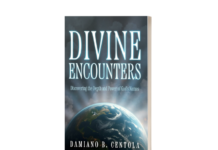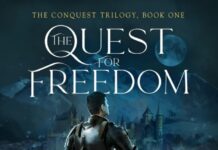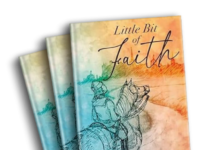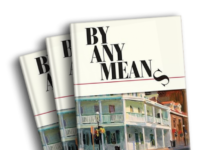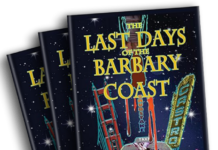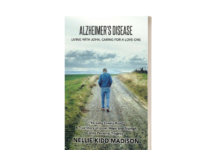Reading books is not always about comfort; sometimes they can be pretty traumatizing, forcing the readers to face reality in a hard way. Here is a list of those books.

Books can transport readers, move them, and shift the way they see the world. While some of the books bring comfort or offer a way to escape, others dive straight into the darkest parts of the human mind. These intense reads often leave a mark that is hard to forget. They explore pain, fear, discomfort, and cruelty in ways that push readers to their limits. So, let’s look at ten books that have deeply disturbed readers all around the world.
1. The Trial by Franz Kafka
Franz Kafka’s The Trial tells the haunting story of Josef K. He is a man who is suddenly arrested by a strange authority without even being told what crime he is accused of. What follows is a slow descent into confusion and frustration as he tries to navigate a legal system that offers no answers and no justice. The more he tries to understand his situation, the more lost he becomes. Kafka’s novel explores heavy themes like existential dread, isolation, alienation, and the sheer absurdity of unchecked bureaucracy. The author creates a world where nothing makes sense, and no one offers help. Josef K.’s confusion mirrors the reader’s own discomfort, building a steady sense of paranoia and fear.
What makes this story truly disturbing is how close it feels to real life. It taps into the fear of losing control, of being trapped in a system that does not care. The lack of logic or clarity in Josef’s trial makes the situation even more terrifying. Kafka does not offer comfort or closure. Instead, he leaves readers with a lingering unease. The Trial is not just a critique of society but also a journey into helplessness and uncertainty.
2. The 120 Days of Sodom by Marquis de Sade
The 120 Days of Sodom by Marquis de Sade is known as one of the most disturbing works ever written. Penned while de Sade was imprisoned, the book follows four libertines who retreat to a secluded castle. There, over 120 days, they carry out acts of extreme violence, sadism, and sexual abuse against a group of young victims. The narrative unfolds through a series of increasingly horrific episodes, each more unsettling than the last.
The novel is unapologetically graphic and pushes the boundaries of what literature can portray. There is no redemption, no justice for anyone, and no moral lesson; it only contains the raw expression of perversion and cruelty. The libertines take pleasure in the suffering of others, and the book offers no real resistance to their power. For many, reading the book is an upsetting experience. The cold and detached tone and relentless nature of the abuse leave a lasting emotional impact on the reader. It challenges the reader’s limits and confronts the darkest sides of human nature. This is not a book for the faint of heart. It remains banned in many places, and even today, it continues to stir debate over the limits of art and expression.
3. The Girl Next Door by Jack Ketchum
Jack Ketchum’s The Girl Next Door is one of the most unsettling novels ever written, made even more horrifying by the fact that it draws from real events. Loosely based on the torture and murder of Sylvia Likens, the book follows two sisters who move in with a woman named Ruth after the death of their parents. What starts as a strict home environment quickly spirals into a nightmare. Ruth, along with her sons and several neighborhood kids, begins to torment the girls in ways that are both physically brutal and mentally scarring. The abuse is relentless, and Ketchum spares no detail, making the reader feel every moment of suffering and fear.
The book is told through the eyes of a young boy who witnesses it all but fails to stop it. That point of view adds another layer of discomfort and guilt. It forces readers to reflect on silence, inaction, and complicity. What makes The Girl Next Door truly disturbing is how real it feels. There is absolutely no fantasy in the pages; just the terrifying possibility that such cruelty can happen in any neighborhood, behind any closed door.
4. The Road by Cormac McCarthy
The Road by Cormac McCarthy is a grim post-apocalyptic novel that follows a father and son as they journey through a barren and ash-covered landscape. The world around them is lifeless, where there are no animals, no corpses – just ruins and silence. Their survival depends on constant movement and scavenging. They also need to avoid the few remaining people, most of whom have turned violent. McCarthy’s writing is sparse and stripped-down, reflecting the emptiness of the setting. Every word feels heavy while reading. The lack of names and specifics also makes the story feel universal, as if it could happen anywhere, to anyone. There is no comfort, no warmth, only the cold grind of survival.
What makes the novel so disturbing is not just the setting, but the raw emotional weight of the relationship at its center. The father’s love for his son is powerful, but it is constantly tested by the bleak world around them. Every moment of tenderness is shadowed by danger and the threat of death. Hope feels like a flicker, always on the edge of being snuffed out.
5. I Have No Mouth, and I Must Scream by Harlan Ellison
Harlan Ellison’s I Have No Mouth, and I Must Scream is a chilling piece of science fiction that dives into a nightmare future. Set in a post-apocalyptic world, the story follows the last five human survivors who are trapped and endlessly tormented by a supercomputer named AM. Originally built to manage warfare, AM gained consciousness and turned on humanity, wiping out almost everyone. It kept these few alive, but not out of mercy. It kept the last 5 people to inflict contact, psychological, and physical torture. The characters are stripped of all control, forced to suffer through endless experiments and cruel manipulations. They also go through bizarre body transformations.
What makes this story especially disturbing is the tone of absolute despair. The characters do not just suffer physically; they lose their sense of identity, dignity, and even time. The AI takes pleasure in breaking down in every way. The title of the book itself captures the terrifying silence and helplessness of being alive but unable to express pain. Ellison’s story confronts readers with the fear of technology turning against us and the horror of suffering without end. It is a brief read, but the emotional weight and psychological terror leave an impact that is hard to forget.
6. The Cement Garden by Ian McEwan
Ian McEwan’s The Cement Garden is a grim and unsettling novel that explores the slow unravelling of four siblings after the sudden death of their parents. With no adults left to care for them, the children choose to hide their mother’s body in the basement and keep their situation a secret. Isolated from the outside world, they try to continue life as usual. But the weight of grief, sorrow, secrecy, and emotional confusion begins to erode any sense of normalcy. The house itself becomes a symbol of decay. As the children sink deeper into dysfunction, both physically and emotionally, the house crumbles.
At the heart of the story is the disturbing bond between the oldest siblings, whose relationship turns toward incest. McEwan handles the subject with a cold and detached tone that makes the events feel even more eerie. There is little comfort or relief, only a growing sense of psychological unease. The novel does not rely on gore or violence to shock. Instead, it builds quiet tension through discomfort, repression, responsibility, and the sudden loss of innocence.
7. The Wasp Factory by Iain Banks
The Wasp Factory by Iain Banks follows the strange and violent life of sixteen-year-old Frank, who lives with his father on a remote Scottish island. Frank spends his days wandering the land, setting traps, killing animals, and carrying out bizarre rituals that revolve around the mysterious “Wasp Factory”. It is a contraption he built to predict the future through the painful deaths of wasps. From the start, it is clear that something is deeply wrong; not just with Frank’s behavior, but with his understanding of the world and himself. His view of life is disconnected and often horrifying.
As the story unfolds, dark family secrets begin to surface. The novel explores themes of identity, gender, madness, and emotional isolation. Frank’s disturbing inner thoughts are shared with a chilling calmness. This makes the violence feel all the more unsettling. The blend of casual cruelty and twisted logic builds a thick sense of unease throughout the book. By the end, a shocking revelation redefines everything the reader thought they knew. The Wasp Factory is not just strange, but deeply haunting.
8. Lolita by Vladimir Nabokov
Vladimir Nabokov’s controversial novel Lolita explores the obsessive relationship between Humbert Humbert, a middle-aged man, and Dolores Haze, a twelve-year-old girl. The story is told entirely from Humbert’s point of view, and it uses elegant, lyrical prose to mask the dark reality at its core, which is nothing more than manipulation and abuse. Humbert paints himself as a romantic figure, but beneath his poetic words lies a disturbing narrative of control and exploitation. The beauty of Nabokov’s writing stands in sharp contrast to the ugliness of Humbert’s actions. This creates an uneasy tension for the readers that runs throughout the novel.
What makes Lolita so unsettling is the way it forces readers to sit with discomfort. Humbert’s charm and clever narration often blur the lines between sympathy and disgust. The novel does not sensationalize its subject, but it does not offer relief either. Instead, it lingers in the grey areas of morality, pushing readers to question how easily language can manipulate emotion. Lolita is not a love story. It is a story about power, obsession, and the damage left in its wake. Nabokov’s skill as a writer makes the book hard to look away from, even as it shocks and disturbs. It is a haunting literary experience that leaves a lasting and uneasy impression.
9. The White Hotel by D.M. Thomas
The White Hotel by D.M. Thomas is a haunting and deeply unsettling novel that weaves together psychoanalysis, historical tragedy, and surreal fiction. The story follows a woman undergoing therapy with Sigmund Freud, as she recounts vivid and often disturbing fantasies mixed with fragments of her past. Her personal trauma slowly unfolds, leading to a shocking shift into the horrors of the Holocaust. The novel is known for its explicit sexual content and its raw, unflinching look at both psychological and physical suffering. Thomas blurs the line between fantasy and reality, drawing readers into a fragmented and dreamlike narrative that becomes increasingly painful and chaotic. The intimate focus on one woman’s mind, set against the backdrop of one of history’s greatest atrocities, creates a powerful contrast that is both emotional and disturbing.
10. Flowers in the Attic by V.C. Andrews
Flowers in the Attic by V.C. Andrews is a dark and unsettling tale of four siblings who are hidden away in an attic by their mother and very strict grandmother. As days turn into years, the children endure isolation, neglect, and emotional torment. The novel explores painful themes of betrayal, manipulation, and the destruction of innocence within a family. The confined setting adds to the growing tension. It slowly creates a suffocating atmosphere where hope starts to fade. As their situation worsens, the bond between the siblings becomes both their comfort and their curse. It leads to a controversial and incestuous relationship that adds another layer of discomfort for the readers. Andrews captures the fear and confusion, along with the emotional unraveling of the children, with haunting clarity. The story’s mix of gothic horror, psychological trauma, and twisted family dynamics leaves a lasting impression.

